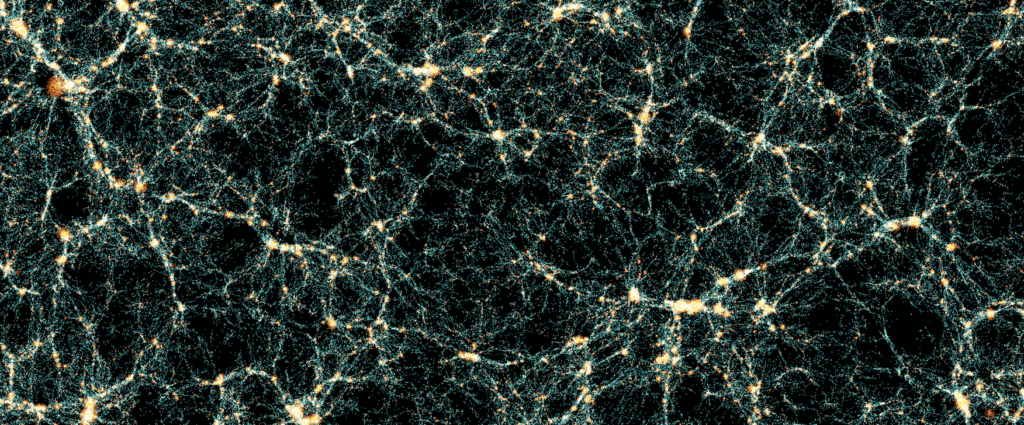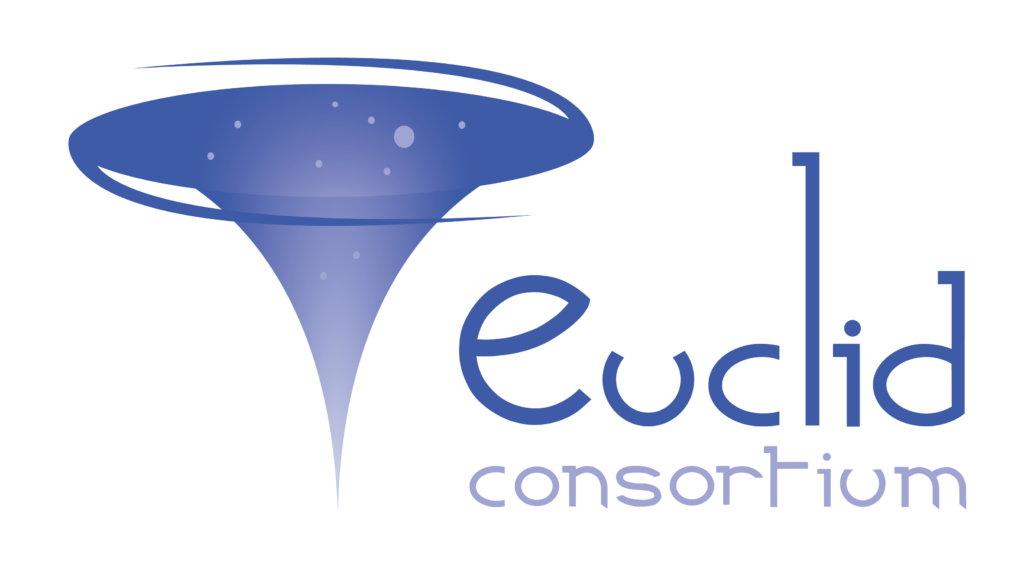Press Release: Euclid Flagship Simulations
2025-09-22, Euclid Consortium, Institute of Space Science Barcelona
A virtual Universe for Euclid: the largest cosmological simulations catalogue is now public
- The largest synthetic galaxy catalogue ever built includes 3.4 billion galaxies with 400 modelled properties available for the scientific community. It precedes the largest 3D map of the Universe.
- A team of 8 institutions within the Euclid Consortium, led by the Institute of Space Sciences (ICE-CSIC) and the Port d’Informació Científica (PIC) have developed this catalogue.

Launched in July 2023, the Euclid mission of the European Space Agency (ESA) is currently in space scanning a third of the sky over a 6-year-period. Today, the largest synthetic galaxy catalogue ever built has been published by the Euclid Consortium, featuring simulations of more than 3.4 billion galaxies to match Euclid’s sharp eyes. The catalogue has been developed by an international team, led by the Institute of Space Sciences (ICE-CSIC) and the Port d’Informació Científica (PIC), and is available on the CosmoHub platform.
This synthetic catalogue, known as the ‘Flagship 2 galaxy mock’, aims to reproduce what the 1.2-m-diameter Euclid telescope will be able to see and capture, mimicking the actual Universe. Due to their very large volume, these simulations allow astronomers to portray very distant galaxies that emitted their light more than 10 billion light years away.
Reproducing the Universe with computational simulations before obtaining the final 3D map will help us understand what Euclid sees and will allow scientists to study the origin of the ‘cosmic web’ —the large-scale structure of the Universe—, test the standard cosmological model and help us to unravel the nature of dark energy and dark matter.
In particular, this simulated catalogue can be used to apply end-to-end software pipelines to constrain cosmological information, as well as to carry on galaxy evolution studies, which will help understand how galaxies form and evolve across their lifetime.
“This is a huge step for the scientific community, since it is now accessible for everyone. In addition, it can have many different scientific applications beyond the context of the Euclid mission”, says Jorge Carretero, researcher at the Port d’Informació Científica (PIC) and the Research Centre for Energy, Environment and Technology (CIEMAT). “In particular, it can be used as a reference simulation for other astronomical surveys and their combinations”, he adds.
A flagship catalogue in the era of large galaxy surveys
The team used computational models, produced by the University of Zurich, that simulate the motion of 4 trillion particles under the influence of their mutual gravitational interactions. Of those 4 trillion, 16 billion gravitationally bound objects, called haloes, were identified located within a distance of 18.6 billion light years from Earth. Haloes were populated with the galaxies that Euclid is expected to observe, calibrating different parameters against the current observed distribution of galaxies.
Overall, this catalogue features 3.4 billions of galaxies and more than 400 modelled galaxy properties, including the galaxy brightness, positions, velocities and shapes. The resulting simulation reproduces with exquisite precision the emergence of the large-scale structure of the Universe – galaxies and galaxy clusters within the network of the cosmic web that comprises both dark and visible matter.
The galaxy catalogue is produced and analysed using specialised hardware, a Hadoop big data platform located at PIC. Generating a catalogue of these characteristics entails both a scientific and a technical challenge, since it includes the development of computation and statistical strategies,as well as incorporating our up-to-date knowledge of galaxy formation and evolution, and its interplay with the dark components of the Universe.
“The main value of the Flagship catalogue is its comprehensive set of properties that have been derived per galaxy. We have checked that many of these properties closely resemble what we see in observational data, but we are just starting to explore how far we can go in terms of predicting properties future galaxy surveys will observe in great detail”, points out Pablo Fosalba, researcher at ICE-CSIC and the Institute of Space Studies of Catalonia (IEEC).
The Euclid Consortium will be focusing on producing new simulation datasets, improving the catalogue resolution and aiming to reproduce the deep fields that Euclid will observe. “The team will work on improving the assigned properties to be more consistent with the observations and to keep the catalogue updated considering the upcoming new observations”, points out Elizabeth González, researcher at PIC and the Institut de Física d’Altes Energies (IFAE).
As observations from previous galaxy surveys, such as the Sloan Digital Sky Survey (SDSS) and the Hubble Space Telescope’s Cosmic Evolution Survey (COSMOS) that have been used to calibrate the model’s parameters used to assign galaxies to the haloes, the Flagship mock galaxy catalogue will help develop strategies for the scientific exploitation of future galaxy surveys. These simulations may have a further impact and outsmart the catalogue’s initial purpose, allowing scientists to test observational techniques in order to recover cosmological information or to carry out studies that connect the visible and the Universe’s dark components.
“The Euclid Flagship Simulations are of utmost importance for the success of the mission. They are used by the Euclid Consortium to validate the performance and quality of the Science Ground Segment End-to-End processing pipeline and to compare the scientific analysis of the Euclid data to cosmological models of dark matter and dark energy. These simulations successfully meet the precision and accuracy necessary to challenge cosmological models to the true dark universe”, concludes Yannick Mellier, Euclid Consortium lead and Institut d’astrophysique de Paris (IAP) researcher.
The catalogue has been produced by the following institutions within the Euclid Consortium: the Institute of Space Sciences (ICE-CSIC), the Institute of Space Studies of Catalonia (IEEC), the Port d’Informació Científica (PIC) ―operated through a collaboration agreement between Research Centre for Energy, Environment and Technology (CIEMAT) and the Institut de Física d’Altes Energies (IFAE)―, the University of Zurich, the University of Utrecht, the Italian National Institute for Astrophysics (INAF), the French Alternative Energies and Atomic Energy Commission (CEA), the University College London (UCL) and the Institut d’Astrophysique de Paris (IAP).
More information
- Euclid Flagship galaxy mock: https://cosmohub.pic.es/catalogs/353
- Euclid Flagship dark matter haloes catalogue: https://cosmohub.pic.es/catalogs/352
- Euclid Collaboration: Castander, F., Fosalba, P., et al (2025). Euclid. V. The Flagship galaxy mock catalogue: a comprehensive simulation for the Euclid mission. Astronomy & Astrophysics, 697, A5. https://doi.org/10.1051/0004-6361/202450853
Contact
Contact researcher
Pablo Fosalba (ICE-CSIC, IEEC)
Jorge Carretero (PIC, CIEMAT)
Elizabeth González (PIC, IFAE)
Euclid Consortium and Communications contact
ICE-CSIC Communication & Outreach Office
Jorge Rivero

